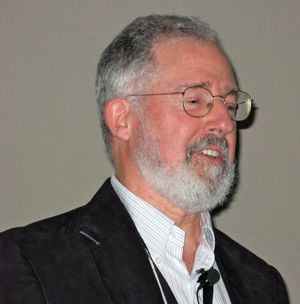|
|

'40 Years of Fun With Computers' was an overview of Ingalls' career, starting with the first program he ever wrote. Given the task of writing a FORTRAN program to print out successive powers of 2, he started with a conventional six-line program that calculated the first 31 - the limit being the maximum value of an integer variable.
He then worked out a way of doing almost infinite-precision arithmetic by using arrays, but the resulting program was 25 lines long, which was significantly longer than those being created by his classmates. Further effort got it down to 10 lines, but Ingalls still wasn't satisfied. When he realised there was a way of carrying out the task using ASCII codes instead of numeric values, he was able to reduce it to six lines including "an appropriate comment."
As a graduate student, he developed a program that could introduce additional statements into FORTRAN programs to gather statistics about which sections were executed the most. (This knowledge can be used to determine where optimisation efforts should be directed.) He dropped out to commercialise the program, but discovered that most of the big potential users were government funded and wanted their computers to be heavily loaded to help justify bigger budgets. A COBOL version was more successful.
One customer was working on speech recognition at Xerox, and subsequently hired Ingalls as a consultant. Ingalls worked across the corridor from Smalltalk creator Alan Kay, "and that's how I got into Smalltalk."
One of Ingalls' major contributions was the invention of the BitBlt operation for graphics. Please read on.
|
|
He used BitBlt to implement Sanskrit OCR as a project for his father, and to program a high-speed version of Conway's Game of Life (a mathematical diversion brought to public attention by Scientific American, and which had a cult following among many computer users in the 1970s).
Ingalls left the computer industry between 1987 and 1996, and ran a resort hotel. But he returned and again joined forces with Alan Kay at Apple and subsequently Walt Disney Imagineering, working on Squeak.
Squeak was a reimplementation of Smalltalk-80 created by running the reference interpreter through a program that would translate it into C as a basis for further work. The team added sound and graphics support, and ensured bit-identical behaviour on all supported platforms (Windows, Mac, various Unix/Linux versions, and RISC OS).
Ingalls feels that Squeak missed an opportunity to be the user interface (and Finder equivalent) for Linux at least in part because there wasn't a sufficiently lightweight version of the software.
After some other projects and a failed attempt at retirement, Ingalls joined Sun Labs where he worked on Lively Kernel (now an open source project), a system written in JavaScript to allow the creation of desktop-style graphical applications that run within a browser. "You can do stuff quickly [using Lively Kernel]," he said.
"Keep things simple, general and flexible and you'll have fun," he advised other developers.







































